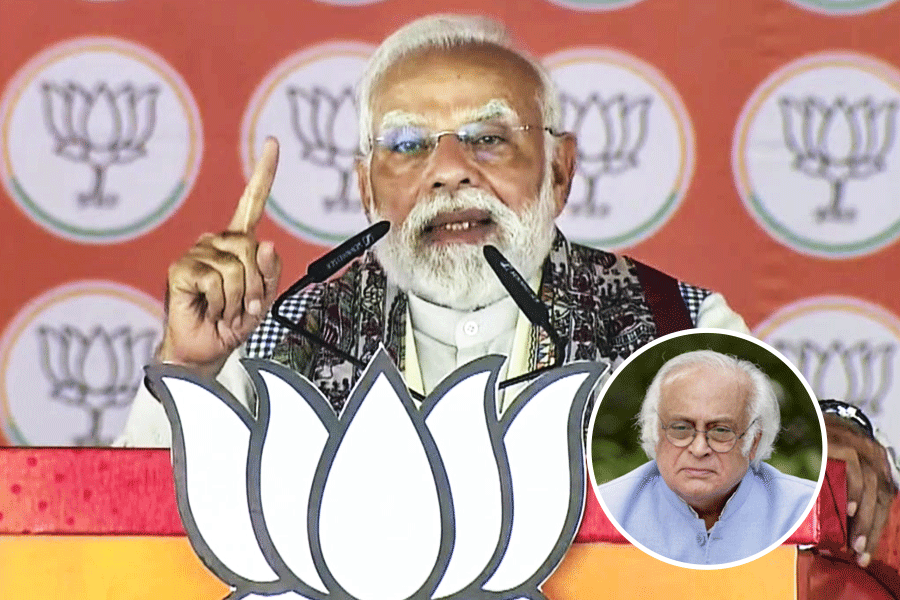Filmmaker M.S. Sathyu once said: “Show me a 10-second shot from a Ray film, and I can tell you it’s his. By its class.”
It is this “class” — of vision, storytelling, technical artistry, performances — that is written all over the 115 minutes of Ray’s Aranyer Din Ratri (Days and Nights in the Forest).
Aranyer Din Ratri is counted as one of the auteur’s most significant works in his post-Apu trilogy phase and a film of extraordinary subtlety, refinement and depth. It is hailed as much for its sublime structure and treatment now as it was when it released 55 years ago.
Earlier this year, the 4k restored version of the film was screened at the Cannes Classics section of the prestigious film festival on the French Riviera. Now, after having shown at the Toronto International Film Festival and the New York Film Festival, the film finally makes its way to home turf, releasing in select theatres today.
“Overall, there are 15 halls which have been specifically chosen for release... we haven’t gone wide with the release and we are happy with this decision,” Arijit Dutta, managing director of Priya Entertainment Pvt Ltd, told t2. Priya Films is the producer of Aranyer Din Ratri, as it is of other Ray masterpieces like Goopy Gyne Bagha Byne (1969) and Pratidwandi (1970).
“There is nostalgia. The family is very happy about the re-release. After the restoration, we waited for Cannes; after Cannes, the film went to New York and Toronto and hence the release date in India got pushed further. It is eventually happening now,” said Dutta. He added that the advance bookings for the film at Priya Cinema, the Deshapriya Park movie address owned by the Dutta family, was “very good”, with city multiplexes also registering encouraging numbers.
Aranyer Din Ratri, which was critically acclaimed on release and was nominated for the Golden Bear for Best Film at the 20th Berlin International Film Festival, follows the story of four young city-bred men, brimming with confidence and on a quest for hedonism, travelling to the forests of Bihar to escape the daily grind of urban life, where each of them goes through a series of experiences that change them in some way or the other. The film stars a strong ensemble cast, comprising Soumitra Chatterjee, Sharmila Tagore, Rabi Ghosh, Simi Garewal, Samit Bhanja, Subhendu Chatterjee, Aparna Sen, Pahari Sanyal, and Kaberi Bose.
At Cannes in May, the film received a standing ovation, with cast members Sharmila Tagore and Simi Garewal in attendance. Also accompanying them was Purnima Dutta, Arijit’s mother, who has played a key role in the restoration of the film that was carried out by the Film Heritage Foundation in collaboration with Martin Scorsese’s The Film Foundation’s World Cinema Project.
“The film got a standing ovation at Cannes. The very fact that (Academy Award-winning filmmaker) Wes Anderson was presenting the film was special. That Rinkudi (Sharmila Tagore) and Simi aunty (Garewal) went all the way to Cannes shows how important the film is to them,” Arijit Dutta told t2.
At the packed screening of the film in Cannes, Anderson — the man behind widely acclaimed cinema like Moonrise Kingdom, The Grand Budapest Hotel and more — went on to describe Ray as “wildly versatile, adventurous and endlessly prolific”, focusing specifically on Aranyer Din Ratri. He recalled how he “first saw it 25 years ago in a very strangely translated, blurry, scratchy, pirated DVD from a little Bollywood shop in New Jersey”.
When asked to share a few behind-the-scenes moments from the shoot of the film, which primarily took place in the Palamu region in Jharkhand, that is famed for its forests, Dutta said: “There are of course many, but there is one story Soumitra jethu (Chatterjee) had told me that sticks with me. One night, it seems, everyone had slunk off to have a drink at the local village spot where the film was being shot. When they came to shoot the next morning, Manikda (Ray) was sitting on a chair, reading the script. Without looking up, he said: ‘Tomader bhaggo bhalo je eta black-and-white chhobi... nahole laal chokhgulo khub koshto hoto lukote’ (‘You are lucky this is a black-and-white film... if it wasn’t, it would have been tough to hide your bloodshot eyes’).











